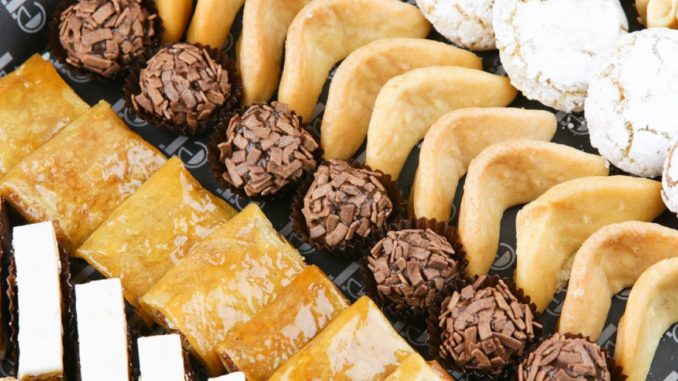
In the Kingdom's gastronomic heritage, the thousand and one recipes for sweets occupy a singular place: in Morocco, it is through pastry that everything begins…
Moroccan pastry is like clay that preserves the imprints of our distant ancestors. In its flavours, its ingredients and its manufacturing secrets, we find all the roots that have nourished Morocco since the dawn of time, the influences that have come to colour its culture, the women, men and peoples who have joined it over the centuries.
Steeped in Mediterranean, Oriental, Turkish, Andalusian and Jewish inspirations, the sweet delicacies that line Moroccan tables form an extraordinary mosaic of the senses, made up of successive layers..
Thus, the Berber ancestors used to eat flaky pancakes called rghaif or beghrir. This pancake made of semolina, flour and yeast, eaten hot and soaked in butter, honey and sometimes almonds, still occupies a central place at the breakfast table.
The sands of Arabia and the scents of the Orient come to Morocco
As for the desert men who very early on came to Morocco from the deserts of Arabia and Iraq, they had buried dates, spices, cereals and recipes for cakes with honey, oil, sesame, pistachios and peanuts in their luggage, sitting on the backs of their camels.
This is how the famous dry cake, the ghriba, which is very popular in Morocco at all family celebrations, came about.
In the 16th century, the Turkish influence was felt in the general refinement of the Moroccan table. But it was from the 17th century onwards that immigrants from Andalusia, of Muslim or Jewish faith, provided Morocco with a new wave of gastronomic customs in which olive oil, almonds, some new fruits and aromatic herbs were imposed.
Finally, in the 18th century, the British imported tea, which became the favourite drink of a whole nation, as did the gazelle horn, these light crescent-shaped cakes with a tasty heart made of almond paste flavoured with cinnamon and orange blossom.
The irresistible experience of a cascade of tastes
Who has not admired the chebakias twisted with sugar and honey on the Ramadan tables, who has not salivated at the taste of briouates with honey and almonds or a pastilla with milk, who has not longed for a still-warm pancake spread with sellou, has not yet discovered all the wonders that Morocco has in store for us.
For these myriad pastries are a reflection of the country. They carry a smile. They have a sunny flavour. They express its hospitality: accompanied by the inevitable glass of tea, they are offered to the visitor with happiness and generosity, as a welcome gift…

Leave a Reply